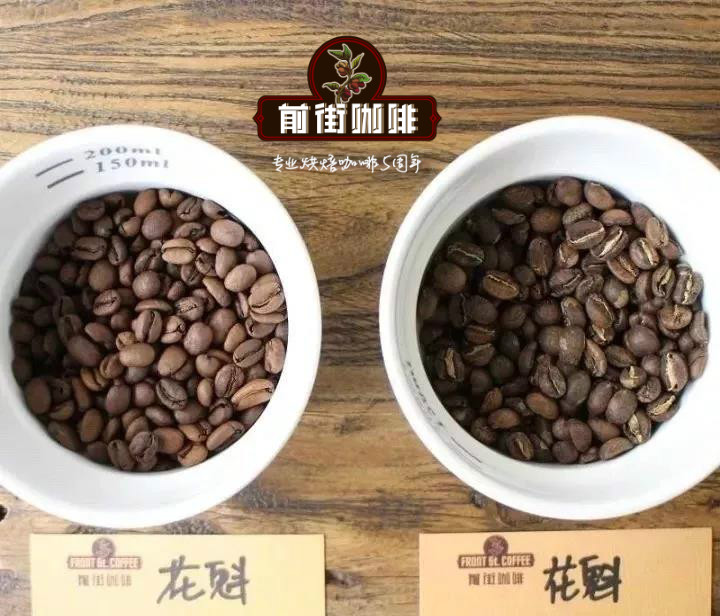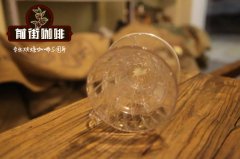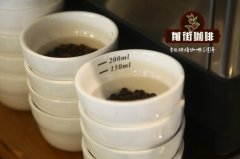Yemeni Coffee Historical Story Origin Trade Culture brief introduction to Ancient Solar treatment of Yemeni Coffee beans

Professional coffee knowledge exchange more coffee bean information please follow the coffee workshop (Wechat official account cafe_style)
Although the wave of fine goods is the revival of "technology replacing machinery", the market is still inseparable from what dominates supply and demand. Operators will express different styles of coffee in different ways, and farmers will also develop special treatments in response to market trends. But there is one country that has produced coffee in the most primitive way since the sixth century, and that is Yemen.
| | Yemen |
Yemen is located in West Asia, only one step away from the African continent. Without the promotion of Islamic priests in the Arabian Peninsula, coffee might still be a wild plant in Ethiopia. Legend has it that coffee was introduced when it was ruled by Ethiopia in the sixth century and was named Qahwa, which means red wine in Arabic. The post-Ottoman Empire invaded in 1536 and controlled the coffee trade. In order to protect export earnings, the authorities strictly prohibit the export of raw beans, and the seeds must be boiled in boiling water before leaving the country.
Yemen was the original source of commercial coffee, brought to Europe by Muslim businessmen or their trading partners. It is also the origin of most coffee varieties in the world today. Bourbon and Typica are from Yemen. In a sense, Yemen is more persuasive as the birthplace of coffee than Ethiopia, because the recorded history of Yemeni coffee dates back 1,200 years.
Yemen, which retained its way of life thousands of years ago, is said to be out of reach of the central government in many places. Ethiopia, across the sea from Yemen, also sells coffee through the port of Mocha, so Ethiopian sun-treated coffee is often referred to as mocha (such as Harald ETHIOPIA Harra Mokka, Ethiopia). Yemeni mocha is the originator of the world coffee trade. It plays an important role in promoting delicious coffee to Yemen all over the world. It is called "Arabica Coffee (Arabia)", which is the origin of the name "Arabica Origin".
It is said that the place where Europeans imported coffee for the first time in the 17th century and spread to the world was the world's largest coffee port, the port of Mocha.
Compared with its previous reputation, the "port of Mocha" has failed to prosper and has become a historic port with only white beaches.
Even so, it is still in the name of coffee, "rising all over the world".
Although Ethiopia was the first country in the world to discover coffee, the first country in the world to mass-produce coffee as a crop was Yemen. At the beginning of the 17th century, the first Yemeni coffee was exported to Europe through the ancient small port of Mocha, which surprised Europeans, because all exported coffee sacks had to be marked with MOCHA to prove that they were transported from Mocha. So Europeans call the delicious coffee shipped from the port of Mocha "mocha coffee", which is why mocha became synonymous with coffee in the early days.
In the 19th century, Mokha coffee was still a rare and expensive coffee. In the era of maritime trade (great navigation), these coffees aged for a long time during shipping, affecting consumers' tastes-the bright acidity of the coffee is not appreciated and is not considered a fresh taste. A similar example is Java Coffee-raw coffee beans from Indonesia arrive in the United States after a long sea voyage and their color changes from green to wooden yellow. Therefore, in this sense, the criteria for measuring traditional Yemeni coffee are different from those of the modern coffee industry.
| Coffee trade in Yemen
The coffee trade in Yemen is complicated. Exporters do not buy directly from farmers, but through a network of middlemen. Local buyers store sun-dried coffee berries (dried cherry) in underground caves (caverns). Most of the coffee actually exported are old beans, not new beans in the season. Generally speaking, fresh coffee beans harvested that year are called "New Corp", those harvested the year before last are called "old beans" (Past Corp), and those placed for more than a year are called "old beans" (Old Corp). But this is a local tradition and the reason why the moisture content of Yemeni coffee is usually in the range of 10.5%.
| one of the driest countries in the world
Yemen is one of the driest countries in the world. Economically, the country currently relies on oil exports for three-quarters of its income, but the World Bank predicts that the country's stocks will be used up around 2017. In a country that used to be self-sufficient in farming, 80% of its crops now have to be imported. The reasons include population expansion and water shortages caused by local misuse of Qat, a crop as old as coffee.
Chart grass is a social drug commonly used by residents of the Arabian Peninsula. Yemenis like to open rooms for banquets at home, chewing chatgrass and gossiping with friends. It contains the stimulant Cathinone, which is as refreshing as a light amphetamine. However, when the power of the drug weakens, the person who takes it will feel depressed. Although the World Health Organization (WHO) does not list it as a drug, it has been banned in many Western countries.
On the other hand, Yemen has been plagued by drought since ancient times. Its major cities rely on underground water, of which agriculture takes up 90% of the water, while growing Qat alone has already spent a lot of water, and authorities expect the underground water in the capital, Sana'a, to run out in 2017. Most of Yemen's cities are built on high mountains, and residents rely on well water from the government or the private sector for a living. The country has as many as 40, 000 to 70, 000 wells, some as deep as 600 meters underground. In addition, pumping water up the hill is expensive, with the government spending as much as $7 billion a year on drilling and pumping water. Therefore, in recent years, the local government has decided to ban chartgrass, which is a waste of water and cannot satisfy hunger, and replace it with other crops. Coinciding with the rise of the boutique coffee boom, the Yemeni government is now trying to encourage farmers to switch to coffee, which consumes half as much water as Chategrass.
| | follows the most primitive method of production-- ancient solarization. |
Yemen is a classic of the ancient early taste of the sun, and it is also the only full-day coffee producer in the world. Europe's fascination with game mocha has not changed since the 17th century. This is related to the extremely dry climate in Yemen, where coffee is mainly grown in the central highlands, with an average annual rainfall of only 400 Mel 750 mm, well below the best rainfall of 1500 Mel 2000 mm in Arabica. Due to the lack of water environment, farmers have been unable to introduce more advanced washing methods, wild flavor is better than Hara coffee, so Yemen has become the best choice to experience the ancient early taste.
The sun treatment in Yemen is rougher than in Ethiopia, the coffee berries grow naturally on the trees, do not use any artificial fertilizers or pesticides, accept a small amount of rain and fog on the hillsides in the summer, blossom and bear fruit, and in the dry winter, ripe coffee berries are allowed to hang on the trees to dry naturally until the fruit dries and turns purple-black on the branches and falls to the ground to pick it up. This is a very unique and rare practice, because only the extremely dry Arab climate and intense sun can allow it, and in other coffee producing areas, the same practice can lead to the decay of coffee berries on the trees. Different from the exquisite sun in which Yega Xuefei or Sidamo picks red fruit and lays it on an "elevated net bed", it is the main reason for the heavy game in Yemen.
Real Yemeni coffee is not common either. Farmers dry the harvested fruit on the roof of a stone house built by the mountain. during the sun and drying rice, they usually turn with a wooden rake to keep each bean evenly dried. After about 20 days of coffee drying, the outer pulp and peel are removed to remove coffee beans, and the process of peeling and shelling all depends on crude stone grinding equipment. Yemeni coffee is rich in flavor, complex, wild, mellow, strong fermentation and low acidity, coupled with the fact that Yemeni coffee often contains an uncertain factor (the time of rain in the season). It is not too much to call her the most special coffee in the world.
If measured by modern cup standards, Yemeni coffee is difficult to reach the grade of boutique. But high-quality Yemeni coffee has a unique flavor: complex Middle Eastern spices, ripe fruit, wine, cocoa, mellow taste and sweet taste. Like durian and stinky tofu, people who like and hate go to extremes.
| | how to name Yemeni coffee |
There are no general guidelines for the naming of Yemeni coffee, and there is no official grading system. Local residents have their own classification system, with hundreds of coffee codes and names for internal classification, but it is not applicable to commercial markets (for export). In the commercial market, the Yemeni mocha is usually named in one of two ways: "place name", or "tree species name".
The Yemeni Moka Matali Mokha Mattari and the Yemeni Moca Shannani Mokha San'ani are produced from Bani Matar province and the hillside near the capital San'a, respectively, while the Yemeni Mokayishi Mary Mokha Ismaili is the tree species nomenclature, which is produced in Hirazi, southwest of Bani Matar.
| | Coffee producing areas in Yemen |
Mocha Matali (Mokha Mattari)
It is the most famous coffee market name in Matali province of Bani Mattar (another word for Bany Mattar), west of the Yemeni capital Sana'a. Coffee is produced at high altitude, usually with a good aroma of red wine, dry fruit, thick taste, deep-roasted and often bitter sweet chocolate. Good quality Matali beans are small in shape, with sweet wine and moderate ripe fruit fermentation flavor of raw beans. Always the winner because of the more obvious Yemeni style.
Mocha Shanani (Mokha San'ani)
A wide market name for coffee from some growing areas west of the Yemeni capital Sana'a. It is a mixed bean from tens of thousands of small farms on the hillside near the capital San'a. Planted at a slightly lower altitude than Matali, generally speaking, it tastes thinner and less acidic, but it has a good fruit flavor and often has better ripe fruit and wild game than Matali. According to my experience, the quality of Sanani varies greatly in recent years, and sometimes there are inferior goods with flat flavor, fishy smell and excessive fermented flavor. Careful cup testing and selection is a must for coffee makers to do their homework and must not be lazy.
Mocha Yishi Mary (Mokha Ismaili)
Yishi Mary is one of the traditional ancient tree species. This is a market name for famous coffee from central Yemen and is also described as a traditional plant classification of Yemeni coffee with high drink quality. Planted at a high altitude, more than 6500 feet, the beans are more round in shape, smaller in shape, thicker and more complex than Matali, and in general, often outperform Matali. This is the least produced and most expensive Yemeni mocha (Yemeni mocha is no longer cheap). The high-quality Mokayishi Mary is produced in Hirazi (although it is famous as Bani Matar, it is the best-known local reputation in Yemen). The highest elevation in Hirazi is 8000 feet.
Mokaremi (Mokha Rimi)
Produced in the Djebel Remi (also known as Raimi, Rayma) area, the quality is similar to that of Shanani, and the fermented taste of Mokarimi is usually a little heavier, with an occasional surprisingly rich sweetness of raisins, and when baked properly, the coffee beans smell like opening a bottle of full-bodied jam.
Mochayafi (Mokha Yafeh)
Produced in the southern Yemeni province of Yafeh (also known as Yaffe), is an unusual Yemeni mocha, is the only "southern flavor" in Yemen, production is also small, almost all are sold to the neighboring United Arab Emirates, in the international boutique coffee market has been rarely seen.
Arab mocha
A coffee of single origin in the mountains of Yemen from the southwestern tip of the Arabian Peninsula bordering the Red Sea. The best cultivated coffee in the world is famous for its high viscosity and special acidity of rich wine.
| what is the relationship between Yemeni mocha and Italian mocha?
Yemeni coffee has the most unique, rich and fascinating complex smell in the world: red wine, wild game, dried fruit, blueberry, grape, cinnamon, tobacco, sweet spices, log and even chocolate. you can see all kinds of adjectives used in Yemeni mocha.
Deep-roasted Yemeni coffee often shows a chocolate-like bitter sweet flavor, affecting today's fancy coffee seasoned with chocolate sauce is also known as the word "mocha". So when you see the word "mocha coffee", it may refer to pure Yemeni coffee, or neighboring Ethiopian coffee, or simply fancy coffee flavored with chocolate sauce. In any case, for picky coffee lovers, only real Yemeni coffee is qualified to be called "mocha coffee".
| | grading of mocha coffee |
The grade of Mocha is: Sunani Sanani
Important Notice :
前街咖啡 FrontStreet Coffee has moved to new addredd:
FrontStreet Coffee Address: 315,Donghua East Road,GuangZhou
Tel:020 38364473
- Prev

The Coffee Story of the Yemeni Port of Mocha the historical story of the name of the Yemeni mocha beans
Professional coffee knowledge exchange more coffee bean information please follow the coffee workshop (Wechat official account cafe_style) Yemen is located in the southwestern tip of the Arabian Peninsula, adjacent to Saudi Arabia and Oman, bordering the Red Sea, the Gulf of Aden and the Arabian Sea. Yemeni mocha coffee is the oldest coffee in the world, and Yemen is one of the first countries in the world to grow coffee. It is said that as early as 1561 AD, Zheng he
- Next

Yemen coffee growing geographical environment What are the main producing areas of Yemen coffee
Professional coffee knowledge exchange More coffee bean information Please pay attention to coffee workshop (Weixin Official Accounts cafe_style) 01| Yemen is famous for its frankincense or spice trade and is the origin of the world's earliest coffee mocha. If you go back to the past, this is also where Noah built the ark in the Bible. Legend has it that 3000 years ago, with gold and incense
Related
- How did the Salvadoran coffee industry develop in Central America?
- What exactly does the golden cup extraction of coffee mean?
- The Origin of Coffee flower
- [2023 Starbucks World Earth Day] there are more meaningful things besides free Starbucks coffee!
- What kind of coffee is there in Spain? 9 Flavors of Spanish Coffee
- Aromatic African coffee| Kenya's coffee culture and historical production area
- Liberica Coffee Bean knowledge: the characteristics of Liberian Coffee beans of the three original species of Coffee beans
- The origin and formula of Spanish latte introduces the taste characteristics of Bombon coffee in Valencia, Spain.
- How to adjust the solution of over-extracted coffee
- What is the tasting period of coffee beans? What is the period of coffee and beans? How should coffee wake up and raise beans?

